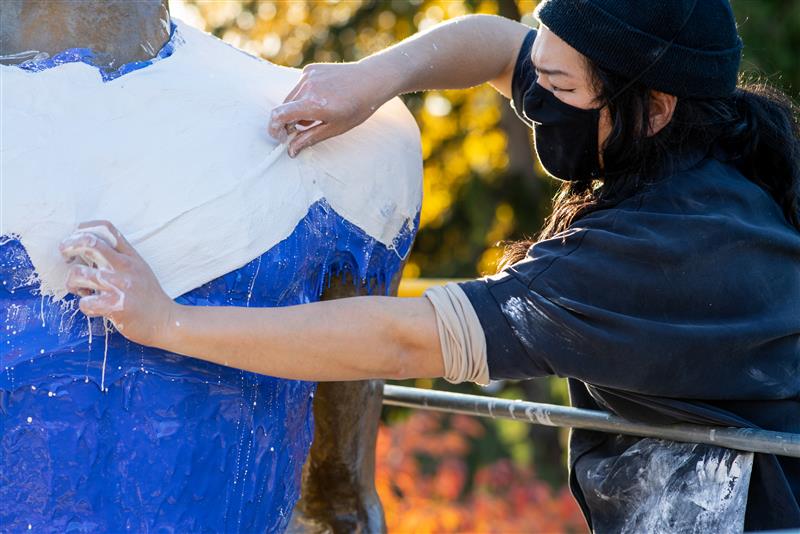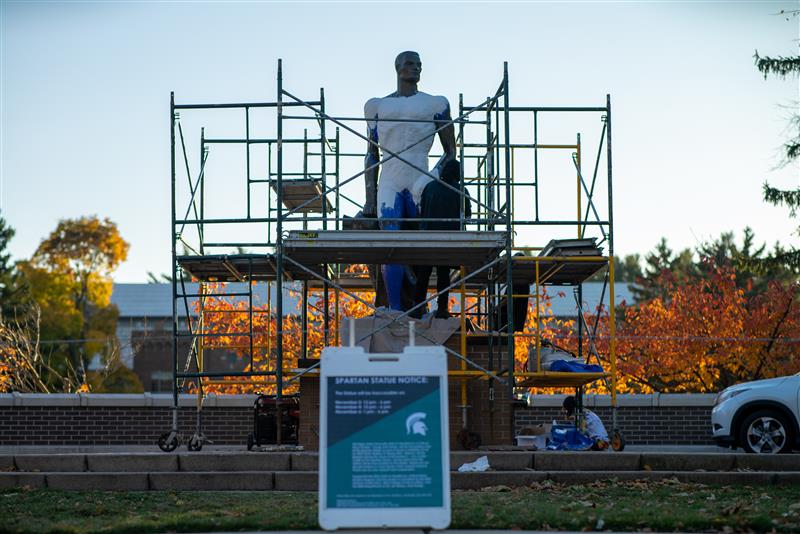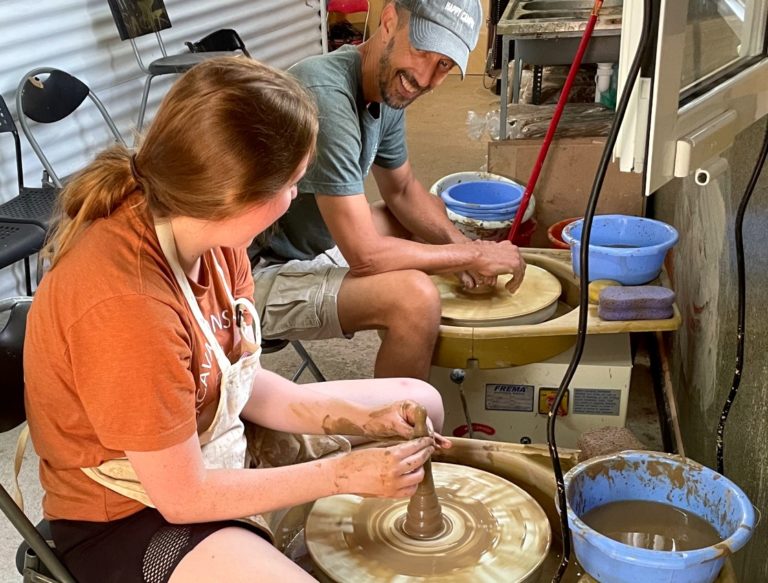As the 2020-2021 College of Arts & Letters’ Artist-in-Residence of Critical Race Studies, Young Joon Kwak is using multidisciplinary artistry to examine MSU’s Sparty statue in order to understand its deepest details and what lies beyond its symbolic skin.
Earlier this month, Kwak, with the help of MSU students Nicolei Gupit, M.F.A. in Studio Art, and Lauren Batdorff, senior Studio Art major, cast silicone molds on some of the statue’s features to be used to create separate sculptures that explore ideas around monuments and symbols of identity and collectivity. The finished work will be displayed at the MSU Union next year.

“My sculptures capture fragmentary imprints of the statue’s surface that will highlight the hidden details that often go unnoticed in the original statue,” Kwak said. “It feels really meaningful to be engaging with Sparty conceptually and physically in this way.
During a time of discourse with public monuments, Kwak decided to take an analytical approach with the statue by “engaging with MSU in a way that is deeply meaningful for the community here.”
My sculptures capture fragmentary imprints of the statue’s surface that will highlight the hidden details that often go unnoticed in the original statue. It feels really meaningful to be engaging with Sparty conceptually and physically in this way.
“Just as fossils provide traces of evidence for understanding the evolution of different species and our environment,” Kwak said, “these sculptures create an alternative historical record of the dominant body of the campus as it evolves into the future.”
Kwak’s main goal with this project is to engage with the university in a constructive and meaningful way. To include MSU community members, Kwak also will take molds of people’s hands across campus to commemorate their touch in conjunction with the molds of Sparty.

“I think hands are so expressive,” Kwak said. “I’m interested in hands as a representation for us as a diverse collective building something together but also for their ambiguity. They could belong to anybody.”
As a multidisciplinary artist who works primarily through sculpture, performance, video, and collaboration, Kwak’s impressive repertoire of work reimages the form, functionality, and materiality of objects while highlighting community and diversity. It has appeared in such places as India and France.
Just as fossils provide traces of evidence for understanding the evolution of different species and our environment, these sculptures create an alternative historical record of the dominant body of the campus as it evolves into the future.
Kwak is the founder of Mutant Salon, a beauty salon and roving platform for collaborative performance and community building within the queer, trans, POC, womxn, and mutant communities. Kwak has an M.F.A. from the University of Southern California and an M.A. in Humanities from the University of Chicago and has taught at the University of California, San Diego, and the California Institute of the Arts. What drew Kwak to MSU and the Critical Race Studies residency was the “promise of personal and artistic freedom.”
“As the Artist-in-Residence for Critical Race Studies, I came here from L.A. to collaborate and engage the community of MSU around ideas of diversity,” Kwak said. “But during this time when things are so segmented, I thought one meaningful way I could engage the community was by engaging the symbol of the campus, of the university. One that everyone can relate to.”

The support of Karin Zitzewitz, Interim Chair of the Department of Art, Art History, and Design, and Gallery Director Jacquelynn Sullivan Gould has been crucial to Kwak, who also was pleased to receive approval from President Stanley and Provost Teresa K. Woodruff.
“This residency was founded on the premise of inviting different perspectives, inviting artists and thinkers from different backgrounds, to broaden the scope of the critical dialogues taking place within the university in a different way,” Kwak said. “You don’t often see institutions that are so welcoming of that difference.”
This residency was founded on the premise of inviting different perspectives, inviting artists and thinkers from different backgrounds, to broaden the scope of the critical dialogues taking place within the university in a different way. You don’t often see institutions that are so welcoming of that difference.
As part of the residency, Kwak is teaching a course online this fall that focuses on objecthood and the performance of identity. Gupit and Batdorff are both students in that class.
The Critical Race Studies Artist-in-Residence program, offered by the Department of Art, Art History, and Design, was established in 2017 thanks to a $750,000 gift from the Michigan State University Federal Credit Union (MSUFCU).


